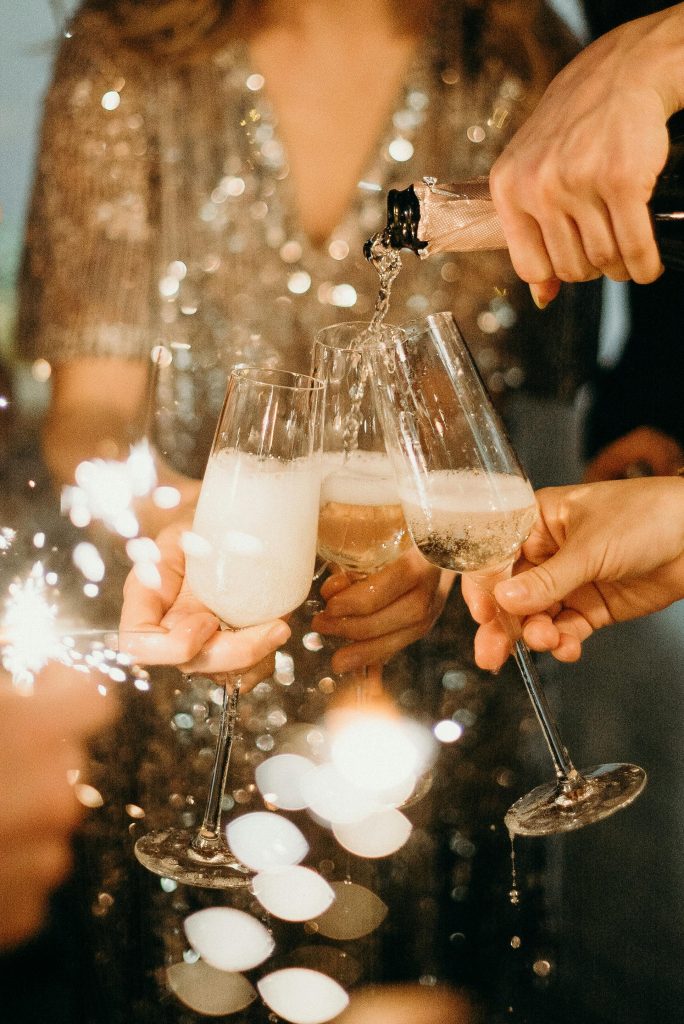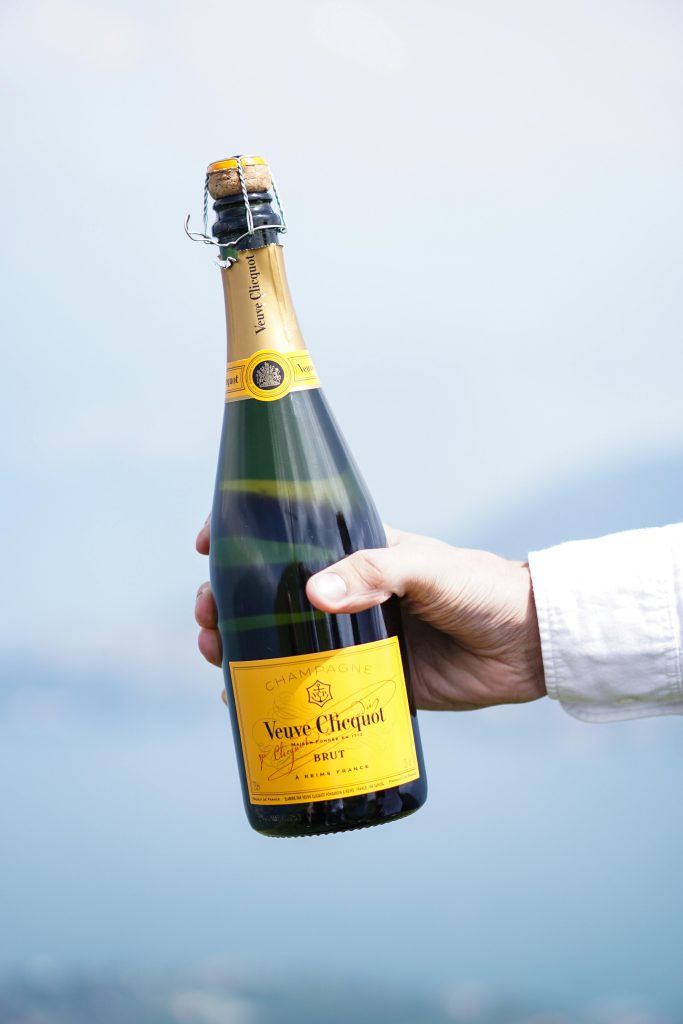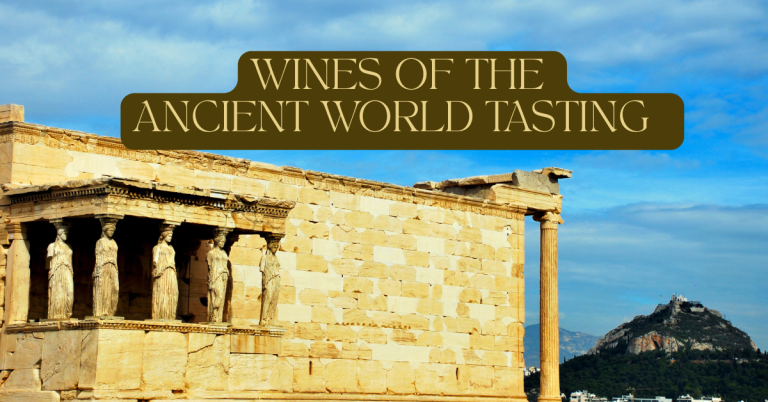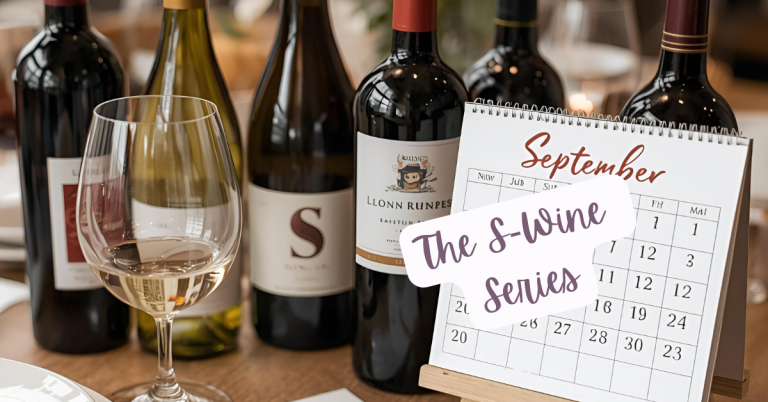World Champagne Day: The Sparkle of Tradition
Pop, fizz, clink. It’s World Champagne Day! Whether you’re toasting a milestone, hosting friends, or simply adding a little sparkle to your Friday, there’s no better excuse to pour a glass of the world’s most famous bubbly. Every fourth Friday in October, Champagne lovers around the globe celebrate this timeless French creation, a symbol of joy, elegance, and effortless celebration. But before you sip, let’s take a quick trip to France’s Champagne region, where history, artistry, and a few million tiny bubbles come together to create something truly special.
What Makes Champagne, Champagne

Not all sparkling wine is Champagne, and that’s an important distinction! True Champagne comes exclusively from the Champagne region of France, about 90 miles northeast of Paris. The region’s chalky soil, cool climate, and centuries of expertise create a wine unlike any other.
Made from a blend of Chardonnay, Pinot Noir, and Pinot Meunier, Champagne is produced under some of the strictest winemaking rules in the world. Each bottle follows the traditional Méthode Champenoise, meaning the bubbles form naturally during a second fermentation inside the bottle, not added later. This meticulous process gives Champagne its signature fine mousse, creamy texture, and layered complexity.
The name “Champagne” is also legally protected. Only sparkling wines made within this French region, following its exact standards, can bear the name. Everywhere else, from California to Italy, you’ll find delicious sparkling wines, but they’re not Champagne.
So when you pop a bottle this World Champagne Day, you’re not just opening wine, you’re tasting a piece of history, terroir, and artistry that can only come from one very special place in the world.
The Art of the Méthode Champenoise
So what makes Champagne’s bubbles so fine and elegant? It all comes down to the Méthode Champenoise, also known as the traditional method, a time-honored process that turns still wine into the sparkling masterpiece we know and love.
It starts with a base wine made from the region’s signature grapes: Chardonnay, Pinot Noir, and Pinot Meunier. Once bottled, winemakers add a small mixture of yeast and sugar (called the liqueur de tirage). This sparks a second fermentation inside the bottle, where natural carbonation forms and the bubbles are born.
After fermentation, bottles rest horizontally for months, or even years, as the wine ages “on the lees” (the spent yeast cells), developing those creamy textures and subtle notes of brioche, toast, and hazelnut that define great Champagne.
When aging is complete, the bottles go through riddling, a gradual turning and tilting process that collects sediment in the neck, followed by disgorgement, where that sediment is removed. A final touch of sugar and wine, known as the dosage, determines how sweet or dry the Champagne will taste before it’s sealed and labeled.
It’s a painstaking process, but that’s what makes Champagne so special, and why it’s celebrated by wine lovers everywhere on World Champagne Day.
Champagne Styles Explained for World Champagne Day
Whether you prefer crisp and dry or soft and fruity, there’s a Champagne style for every taste and occasion, and discovering your favorite is part of the fun of World Champagne Day. The key difference often comes down to sweetness level, which is determined by how much dosage (that final sugar-and-wine mixture) is added before corking.
Here’s a quick guide to help you find your perfect pour:
- Brut Nature / Extra Brut – The driest style of Champagne with little to no added sugar. Crisp, clean, and perfect for those who love minerality.
- Brut – The most common style you’ll find. It’s balanced, bright, and food-friendly. Ideal for everything from oysters to popcorn.
- Extra Dry / Sec – Despite the name, these are slightly sweeter than Brut, offering a softer, rounder sip that many find crowd-pleasing.
- Demi-Sec – Noticeably sweeter and lovely with desserts or spicy foods. Think strawberries and cream or Thai takeout.
- Rosé Champagne – Made by blending red and white wine or through short skin contact with red grapes. It’s lively, romantic, and pairs beautifully with everything from sushi to chocolate.
- Blanc de Blancs – Crafted entirely from Chardonnay grapes. Elegant, citrusy, and delicate. A favorite for brunch or seafood.
- Blanc de Noirs – Made solely from Pinot Noir and/or Pinot Meunier. Fuller-bodied and richer, with notes of red berries and spice.
Each style tells its own story. From crisp aperitifs to celebratory showstoppers, and that’s part of Champagne’s enduring charm.
Perfect Pairings for World Champagne Day: What to Eat with Champagne

One of the best things about Champagne is how effortlessly it pairs with food. Its bright acidity, fine bubbles, and balanced flavors make it one of the most versatile wines you can pour, just as at home at brunch as it is during a celebration dinner.
Here are a few pairing ideas that always sparkle:
- Oysters or Shrimp Cocktail – A classic match! The briny freshness of seafood highlights Champagne’s crisp, mineral-driven character.
- Fried Chicken or Truffle Popcorn – The salt and fat meet their match in those zesty bubbles. It’s an unexpected but unforgettable combo.
- Soft Cheeses – Creamy brie, triple cream, or even aged gouda play beautifully with Champagne’s texture and gentle acidity.
- Caviar, Potato Chips, or French Fries – High/low pairing perfection. The salt and crunch bring out Champagne’s toasty notes.
- Dessert Pairings – A Rosé or Demi-Sec Champagne pairs wonderfully with strawberries, macarons, or light fruit tarts.
💡 Pouring Passport Tip: Don’t save Champagne just for big moments. It elevates even the simplest occasions. Pop a bottle for a cozy dinner at home or your next brunch with friends, and you’ll quickly see why it’s the ultimate anytime celebration wine.
Favorite Bottles to Pop on World Champagne Day
Whether you’re raising a glass for yourself or hosting friends, World Champagne Day is the perfect excuse to open something special. From iconic houses to hidden gems, here are a few bottles worth celebrating with, no matter your budget or occasion.
Taittinger Brut La Française
Elegant • Bright • Timeless
A beautifully balanced Champagne known for its fine bubbles, floral aroma, and citrusy freshness. Light, refined, and versatile, it’s the kind of bottle that makes any moment feel effortlessly chic.
Price: Around $60
Perfect Pairing: Seafood towers, sushi, or creamy pasta

Veuve Clicquot Yellow Label Brut
Classic • Toasty • Reliable
Synonymous with celebration, Veuve delivers that signature blend of crisp fruit and biscuity richness. It’s bright, structured, and pairs with just about anything; no wonder it’s always a crowd favorite.
Price: Around $55
Perfect Pairing: Fried chicken, gougères, or truffle popcorn
Moët & Chandon Impérial Brut
Vibrant • Fruity • Polished
One of the most recognized Champagnes worldwide, Moët offers notes of green apple, citrus, and subtle toast. It’s festive, approachable, and perfect for gifting or any “just because” celebration.
Price: Around $45
Perfect Pairing: Soft cheeses or shrimp cocktail
Billecart-Salmon Brut Rosé
Romantic • Refined • Balanced
Delicate yet expressive, this rosé Champagne shows hints of wild strawberries, rose petals, and fresh cream. It’s elegant and beautifully textured. Perfect for a date night or holiday toast.
Price: Around $90
Perfect Pairing: Goat cheese crostini or chocolate-covered strawberries
Laurent-Perrier La Cuvée Brut
Fresh • Floral • Crisp
Known for its graceful style, this Champagne offers aromas of white flowers, citrus, and brioche. It’s refreshing yet complex, ideal for those who prefer a lighter, more delicate profile.
Price: Around $65
Perfect Pairing: Oysters or lemony roast chicken
Dom Pérignon Vintage Brut
Iconic • Complex • Legendary
The ultimate statement bottle. Each vintage of Dom Pérignon tells a story of the harvest year, layered with notes of toasted almond, brioche, and candied citrus. It’s art in a bottle.
Price: Around $300+
Perfect Pairing: Caviar, scallops, or special milestones
Louis Roederer Cristal Brut
Luxurious • Silky • Iconic
Originally created for the Russian Tsars, Cristal is all finesse. Creamy texture, golden fruit, and endless persistence. It’s as collectible as it is celebratory.
Price: Around $350+
Perfect Pairing: Lobster or white truffle risotto
Moët & Chandon Nectar Impérial Rosé
Bold • Fruity • Playful
A more indulgent Champagne with ripe berry flavors, floral aromas, and a touch of sweetness. It’s fun, vibrant, and perfect for dessert or dancing.
Price: Around $70
Perfect Pairing: Macarons, chocolate mousse, or spicy dishes
Armand de Brignac “Ace of Spades” Rosé
Decadent • Opulent • Photo-Worthy
With its stunning metallic bottle and rich, fruit-forward profile, this Champagne is made for moments that deserve attention. Smooth, lush, and undeniably glamorous.
Price: Around $500+
Perfect Pairing: Celebration-worthy occasions, and a camera flash
G.H. Mumm Cordon Rouge Brut
Bright • Crisp • Accessible
A great everyday Champagne with lively fruit and gentle toastiness. It’s approachable and fun. Ideal for brunches, parties, or Tuesday-night toasts.
Price: Around $40
Perfect Pairing: Smoked salmon or French fries
💡 Pouring Passport Tip: Choose your Champagne based on your vibe. Taittinger for elegance, Veuve for familiarity, Moët for versatility, or Dom Pérignon for pure celebration. No matter which you choose, it’s hard to go wrong when bubbles are involved.
Passport Stamp: Dreaming of the Champagne Region
If you’ve ever dreamed of sipping straight from the source, France’s Champagne region is the ultimate destination. Located just a short train ride from Paris, this picturesque area is filled with storybook villages, sprawling vineyards, and centuries-old cellars waiting to be explored.
Start your adventure in Épernay, home to the famous Avenue de Champagne, where you can visit legendary houses like Moët & Chandon, Perrier-Jouët, and Pol Roger, all within walking distance. Nearby Reims offers a mix of grand history and effervescent tasting rooms, including the majestic chalk cellars of Taittinger and Ruinart, both UNESCO World Heritage sites.
For a more intimate experience, head into the hills of Hautvillers, the charming village where Dom Pérignon perfected the art of blending. Here, you can taste small-production grower Champagnes, stroll through vineyards, and experience the authentic side of the region, where every glass tells a personal story.
It’s a bucket-list trip for any wine lover, and visiting during harvest season (late September to early October) adds an extra layer of magic, with golden leaves, crisp air, and the unmistakable sound of corks popping in celebration.
Closing Toast: Celebrate Every Sip This World Champagne Day
Whether you’re toasting with vintage prestige or your favorite go-to bottle, World Champagne Day is a reminder to celebrate life’s sparkling moments, big and small. From birthdays and weddings to quiet Friday nights on the couch, Champagne transforms the ordinary into something extraordinary.
So go ahead: pop that cork, pour those bubbles, and savor every sip. Because in the end, Champagne isn’t just about what’s in the glass it’s about the feeling it brings when we raise it.
Looking for more bubbly inspiration? Check out our Sparkling Wine Pairing Guide for more ideas on what to sip (and serve) all year long.







